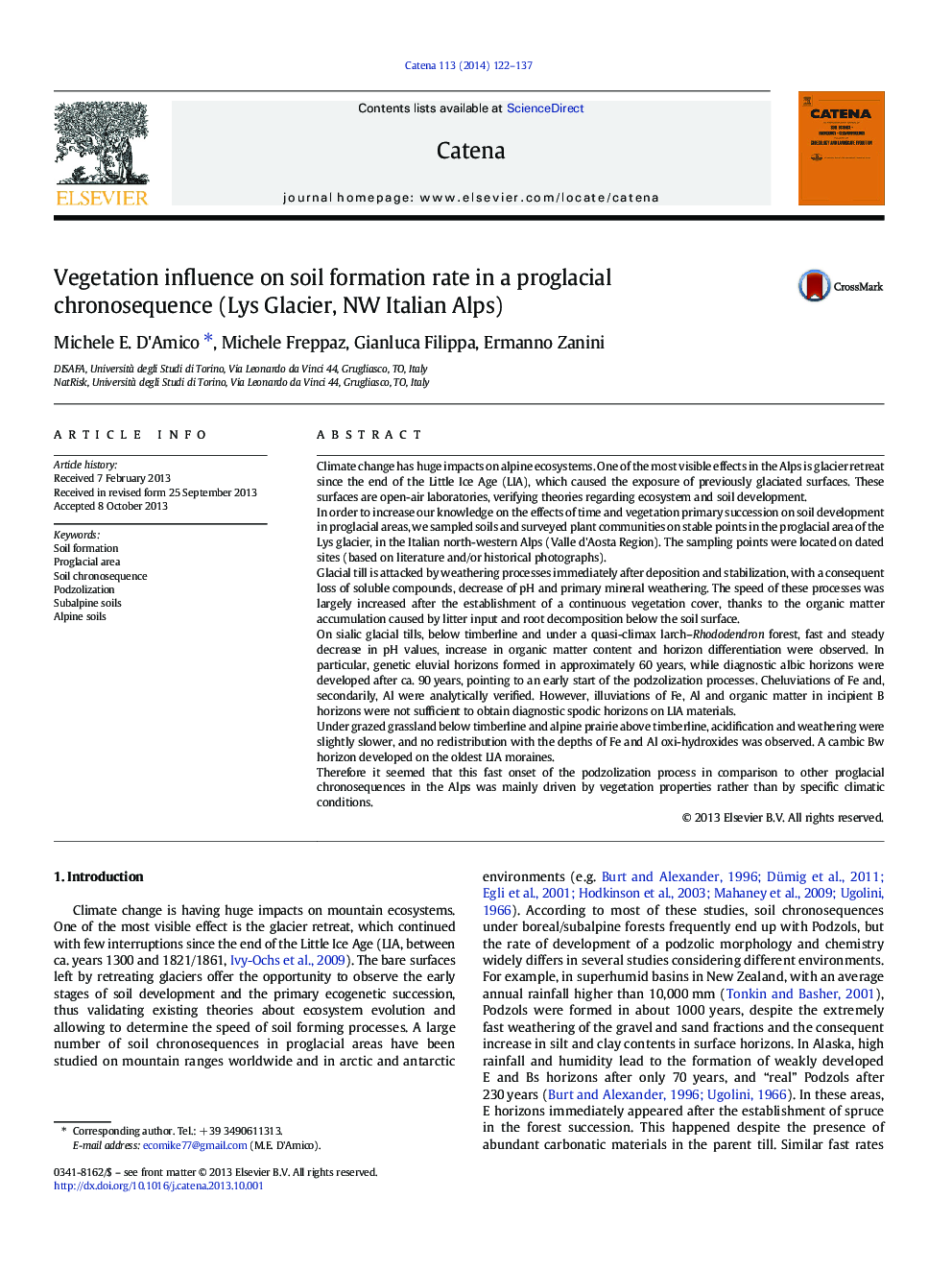| کد مقاله | کد نشریه | سال انتشار | مقاله انگلیسی | نسخه تمام متن |
|---|---|---|---|---|
| 4571518 | 1629239 | 2014 | 16 صفحه PDF | دانلود رایگان |

• Plant succession and soil development were slower above than below timberline.
• Under grassland below and above timberline, Cambisols were found on old moraines.
• Under typical subalpine forest-shrub vegetation, podzolization was very fast.
• E horizons and “real” Podzols appeared faster than in other forefields in the Alps.
• Vegetation seemed very important in the early podzolization onset.
Climate change has huge impacts on alpine ecosystems. One of the most visible effects in the Alps is glacier retreat since the end of the Little Ice Age (LIA), which caused the exposure of previously glaciated surfaces. These surfaces are open-air laboratories, verifying theories regarding ecosystem and soil development.In order to increase our knowledge on the effects of time and vegetation primary succession on soil development in proglacial areas, we sampled soils and surveyed plant communities on stable points in the proglacial area of the Lys glacier, in the Italian north-western Alps (Valle d'Aosta Region). The sampling points were located on dated sites (based on literature and/or historical photographs).Glacial till is attacked by weathering processes immediately after deposition and stabilization, with a consequent loss of soluble compounds, decrease of pH and primary mineral weathering. The speed of these processes was largely increased after the establishment of a continuous vegetation cover, thanks to the organic matter accumulation caused by litter input and root decomposition below the soil surface.On sialic glacial tills, below timberline and under a quasi-climax larch–Rhododendron forest, fast and steady decrease in pH values, increase in organic matter content and horizon differentiation were observed. In particular, genetic eluvial horizons formed in approximately 60 years, while diagnostic albic horizons were developed after ca. 90 years, pointing to an early start of the podzolization processes. Cheluviations of Fe and, secondarily, Al were analytically verified. However, illuviations of Fe, Al and organic matter in incipient B horizons were not sufficient to obtain diagnostic spodic horizons on LIA materials.Under grazed grassland below timberline and alpine prairie above timberline, acidification and weathering were slightly slower, and no redistribution with the depths of Fe and Al oxi-hydroxides was observed. A cambic Bw horizon developed on the oldest LIA moraines.Therefore it seemed that this fast onset of the podzolization process in comparison to other proglacial chronosequences in the Alps was mainly driven by vegetation properties rather than by specific climatic conditions.
Journal: CATENA - Volume 113, February 2014, Pages 122–137